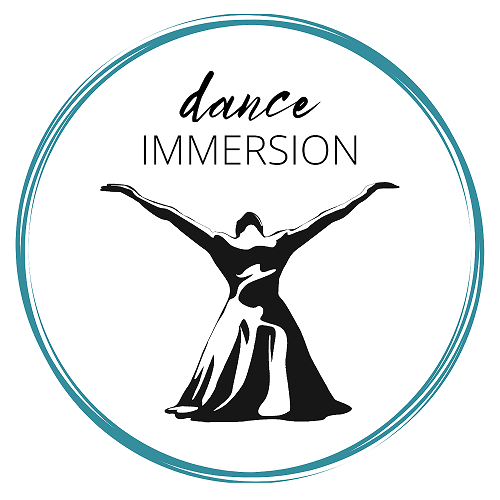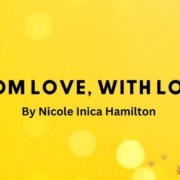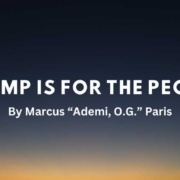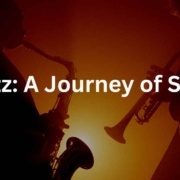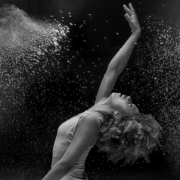By Raoul Pillay
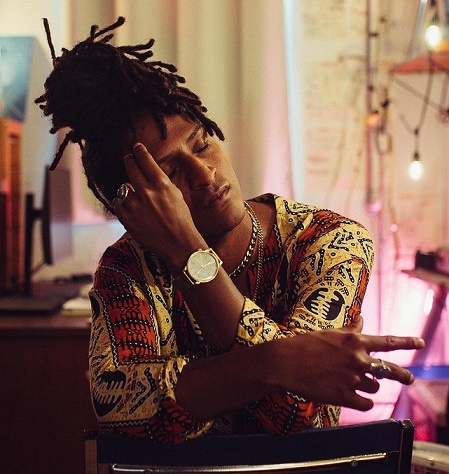
Raoul Pillay
Through Jazz, I found the gift of self. Growing up as coloured in Zimbabwe but black in Canada, it felt like two very different stories. I had to relearn mine. Who is Raoul?!
I spent a lot of my teenage years isolated, going from one form to another. It felt like a never-ending journey and the one thing I was chasing, could not be found. I got so occupied in this sense of being, wanting to prove a point to myself and others that I kept moving further and further away from who I truly was. Not to long after I lost my father to mental health. It felt like my world was over but from then on, I knew I had to make my dad proud.
I was offered a position to be in a company called Holla Jazz run by the artistic director Natasha Powell. I remember vividly trying to understand the material. It felt like I could not dance or count. I would always go to the back when we did the form across the floor and would often wear suits, as a direct reference to the people I studied. Certain characteristics within this vernacular were harder to embody and others to compare, to the other forms I studied. Having a powerful leader such as Natasha Powell, made the process easier to bare. She would lead the lessons with stories, and pictures and her knowledge and dedication to the form was downright inspiring. We went on to win a Dora award for best ensemble and we just knew, we did us. We felt in purpose and had a duty to bring light to the true form of Jazz. I remember shortly after doing a show in front of other Jazz dancers. I had imagined similar embodiment and cultural representation. It was not what I expected. A woman approached us shortly after. Her eyes flared up and immediately gave us a hug. With offerings of candy, she whispered to us “Thank you, finally some more black people”. I remember telling myself from that day on, I had a bigger responsibility.
To understand my purpose I had to retrace the stories of the elders. Preaching social environments that birthed these forms. I spent a few years watching and imitating. Being a student to the environment. I had finally fell in love with something. It felt so out of body that the phrase “Catching the ghost” made sense. I spent a lot of time studying the roots and the more spiritual I became, the more curious I did as well. Seeing that Jazz is the root form I thought why separate the forms. It really defined my style and birthed my name “Jiggyman”. The free flow of house, the spirit of Jazz and the embodiment of my ancestors. I found me and my purpose. The kid who was once lost had found his life again. It felt like I could see the music as I moved. Almost like clay with its ability to be formless and adaptable. I began to theorize things and the more I learned, the more I unlearned. I then attended symposiums with cultural leaders and lectures affirming cultural memories and the expressive form that is Jazz, including the dance Immersion Legacy Series Jazz Dance Symposium. Moncell once said “We are spiritual beings, having a human experience”
I also recently attended Vernacular Spectacular. An event filled with jazz and its root connections. Lessons run by lecturers who understand the historical lineage from past to present. I met someone I really look up to. Chester Whitmore! He understood and lived life in such a youthful way and we got along to the point, that on the last day he didn’t want me to leave his side. I cried that day. It was never about dance but more so the cultural memories. He portrayed a father figure, an embodiment of being and a representation of who I was. I now walk with my head high. In full purpose speaking the language of Jazz and affirming my presence within it.
Jazz is not just what you watch or try to study. It is a way of being. These are dancers that were oppressed, so I will not be taking this form lightly. As they say “When you learn its name, you learn its power.” My name is Jiggyman and I live the spirit of Jazz in many forms. Through lived experiences I am but an idea that remains formless and in full spirit. Here to reclaim the power of the people and to speak the truth.
Jiggyman
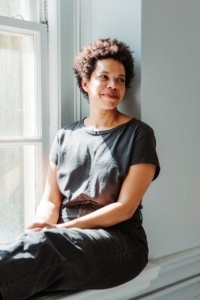
As part of our 2018 Doing Our Thing event, dance Immersion had the opportunity to ask Dr. Seika Boye:
How do you balance being both a scholar and an artist?
Seika’s In-Depth Reply:
“I am not sure that I ever tried to find a balance between these two so often separated categories – scholar and artist – or I did and failed because I thought that they were separate. In truth, the mechanisms to receive support and employment in the fields of scholarship and artistic practice are often separate and this is extremely difficult for many people. It forces them to create separate identities. In me as a person they are entirely connected. I am grateful to be in place where there is room for both – in fact where both are required of me.
I used to joke that I have tried to quit dancing a hundred times but kept coming back. The truth is that I have been oscillating between dance(ing) and writing (let’s say for simplicity’s sake) for stretches of weeks, months … sometimes years, since I was a young person. I was often either in constant motion dancing or sitting and reading and eventually writing. My undergraduate degree is a BFA in Dance with a double major in English (literary theory). I left performing so I could write. When I write it is most often about dancing. You see the pattern.
I stopped training intensively or regularly as a dancer nearly thirteen years ago (when I was thirty) which seems just impossible but it is true. I made a very clear decision to stop performing and to pursue writing and research and for a time I continued to make dances while doing an MA, working in archives, publishing, administration and arts journalism. When I began my PhD in 2010 my oldest son was 2.5 years old and in 2012 my youngest son was born. My time and energy considerations revolve around my family. This is another area in which the idea of balance is not necessarily the most productive for me.
One of the reasons I decided to do a PhD was because I wanted to do in-depth, long term, writing and research which of course requires an in-depth reading practice as well. There was a point at which I clearly saw that in order for me to do the PhD the way I wanted to – which was archive, research and writing focused – I would have to say no to everything else that came my way, and I am glad that I did even though it was not always easy. I trained as a dancer from the time I was three years old – ballet, jazz, tap, musical theatre and then modern and post-modern pre-professionally and professionally. My life was devoted to dancing. Through dancing I understand the value of practice, discipline, study, repetition (I love repetition) but also of improvisation, time, space and community. I needed the time and space in my life, my mind, my body to do the research I was doing — to carry around and then communicate the massive accumulation of knowledge and material I was processing and generating. I needed to be a in a community that could support this work and where I could learn new practices and ways of thinking. In addition to having the privilege to do a PhD, I received a funding award as a Social Sciences and Humanities Research Council of Canada Doctoral Fellow, which also afforded me extra time for a couple of years as I did not have to work (as much) as a teaching or research assistant in exchange for my funding (which is the arrangement in many doctoral programs). Any way you do it, a PhD is an exercise in intellectual stamina and is extremely demanding and stressful physically, financially and emotionally. It is not a sustainable way of living. I learned to think about how things needed to be shifted around rather than about how to find balance because I was not in a balanced environment. I resisted taking on the idea that I was.
I am trying desperately to see my friends more often now that the PhD is done. I walk more – I am a walker and I miss it if I am not walking longer distances regularly. If I see a workshop that interests me I actually try to go. These are shifts in the way I spend my time. I have always had boundaries that allow for down time alone together with my family.
Two other things were happening between 2010-2017 while I was doing my PhD and raising my kids with my husband Logan.
The first was the opportunity to teach movement to actors within the Centre for Drama, Theatre and Performance Studies, which I continue to do. Transferring my movement knowledge into this training context over the past five years and counting continues to be a deeply rewarding experience in which I get to question, consider, work with and learn from moving bodies in a multiplicity of ways. Which also means that I am thinking about community relationships through movement and breath and space. Here again my students and I are often breaking down the binary of text and movement as well as the idea that their practice and their scholarship are, should be, or need to be separate. I encourage critical thinking in all aspects of performance practice. I also teach these students in so called lecture or seminar contexts. It is good for them to meet with me and see me and engage with me in both spaces. When we see someone do something it gives us an opening to see ourselves do it. I’m a dancer and artist and I have a PhD. Big deal. One does not eliminate the other.
The second was the emerging realization that the space I gave myself for research through stepping away from dancing as I had always known it, allowed the way that dance resides in my body and life to transform and re-situate itself. Dance is no longer tied to the complexities of a ‘career in dance’ that negatively impacted the way I felt about dancing for a long time – which was a sorrowful experience. I didn’t feel that there was room for me to grow in the ways that were of interest to me so I had to change course. Now dance is tied to the knowledge and communities I have gained throughout a lifetime of dancing and moving and learning and teaching with others. I have a new-found respect for this knowledge and gratitude for these communities that is bringing me a lot of joy.
The question I ask myself now is, “What do I need to do to process the question(s) before me?” Read something? Move around? Write something? Walk outdoors? Take a workshop or a class? Have a conversation? Teach about or around it? Ask my kids what they think? Head to an archive? See a show? I don’t defer to an external perception of what balance might be. I think I only actually understand balance as an embodied experience anyways or as something achieved with material items in space (as in children’s blocks). Even if I say I am going to spend an hour doing x and an hour doing y, it does not actually mean any balancing went on in terms of processing ideas. By recognizing the questions that emerge within me and being open to any of the multitude of knowledges that I have as a dancer, cultural historian, educator, writer, employee, sister, daughter, friend, mother, mixed-heritage Black woman, and wife I am not trying to force any one thing to the forefront. Sometimes I think that what taught me the most about how to ‘deal with things and people’ was working in the service industry from the time I was fourteen to the time I was nearly twenty-eight or nine. I have always had to work – to help pay for dance lessons and tuition not to mention the cost of living once I left home at twenty.
Something that I know from my dance training and that I teach all the time is that you cannot force balance – it is a dynamic state that requires constant adjustment based on the arrangement of the matter that is trying to achieve balance.
One of the biggest challenges before me right now is administrative. Now that I have opened my life back up to freelance work outside of my part-time appointment at the University of Toronto, administration has become very difficult – overwhelming. Because I am a scholar/writer, I am often asked to write a few words about this or that outside of the work that I have actually been engaged in a contract to do – if I am in a contract at all – sometimes it is just a request for a few thoughts or ideas. Most times it is not as simple as this or that. The fewer the words, the clearer the ideas have to be (another point I teach all of the time!). Most often this is a process that requires a lot of time and energy for me. In the end, I am usually grateful for the opportunity to have thought something through – writing is thinking for me – but I have to start saying no because I fear that the challenge is becoming an obstacle to the questions that I feel are most important, to me, right now.”
———
Thank-you dance Immersion for this opportunity to reflect on my practices and to teach a workshop at Doing’ Our Thing 2018 with d’bi Young. I am so grateful for the work that the organization has been doing for decades and continues to do.
S.B.
Photo of Seika by Alyson Hardwick: https://www.alysonhardwick.com/about
By Timea Wharton-Suri
At the end of 2020, an exceptional year of challenge and change, I am reflecting on dance Immersion’s year.
Shock, fear, hope, strength, questioning, challenging, calling out, calling in, coming together, standing apart: 2020.
I am grateful to have been invited to join the dance Immersion team in the fall. This organization, once again, demonstrated its resilience through significant challenges.
Founder Vivine Scarlett was working in Ghana when COVID-19 hit and had to remain there for six additional months before she could get home. Working with Nicole Hamilton here at home base in Toronto, they planned and re-planned, continued connecting with communities around the world to devise artistic projects, worked with the IABD to postpone the Toronto conference, and kept dance Immersion afloat. They supported community members and one another.
We said good-bye to incredible team member Cassandra Belafonte who helped build and sustain dance Immersion over the past decade. The organization also said hello to Zahra Badua, Jillian Greyson, and me.
We have plans to continue connecting with you through the new Bantaba series, and with livestream presentations and outdoor events in the summer. And we continue to dream for the 21-22 season.
I am so grateful for the dance Immersion community and for this strength in my professional life. And I am figuring out how I want to proceed in my personal life as the New Year approaches.
With so much uncertainty still facing us heading into 2021, perhaps instead of trying to make resolutions that I may not be able to live up to because of external circumstances, I can, instead, ask myself a few questions and let the answers guide me forward:
What is the most important lesson I learned this year?
What am I thankful for this year?
What challenges did I overcome?
What did I do for my physical and mental health?
Was there anything left unfinished that I would like to complete?
I’m sure there are many important questions to reflect on, but I will start there.
A NOTE TO YOU:
We at dance Immersion are so thankful for you.
Whether you spoke out, sat up, peacefully paused, kept going, hung on, just survived, or thrived – you made it through. And we did it together.
All the best to you for healthy, peaceful 2021.
XO,
Timea
OFFICE HOURS
Monday to Friday: 10 AM – 5 PM
We are best reached via email:
info @ danceimmersion.ca
CONTACT
DONATE
Every dollar of a donation made to dance Immersion directly supports artists for presentations, workshops, and residencies.
